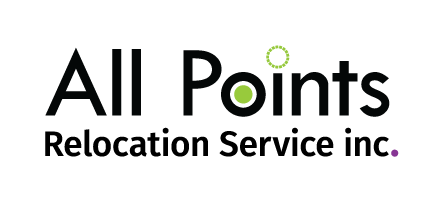However, this is after all an international border, and with it, there can be some added challenges to relocation. There are many differences between a cross-border move and a domestic move, and some of them are obvious, such as the need for immigration assistance. Other aspects can be quite different, so we thought we would highlight them for you.
For this article, we will take it as a given that immigration services will be required for cross-border relocation.
The Four Basics Steps of a Move
1. Identification
Canadian citizens moving to the United States need the following identification.
- Passport for you and family members;
- Work visa, I-94, and multiple entry forms or an immigrant visa – whichever applies to your specific case;
- Social insurance number is also mandatory;
- Copy of marriage certificate (only when the spouse has a different family name);
- A letter from your employer specifying validity of the transfer;
An extra document that you need to complete for the movement of your household goods:
- It is the responsibility of the person that is moving to complete and provide a 3299 form to the moving company before loading;
Special Hint: You have to cross the border before your goods can travel with your household goods carrier. You will make a declaration that your goods are to follow.
US citizens moving to Canada need the following documents:
- Canadian work permit or your immigration provider’s prepared immigration package (if you are getting your work permit as a point of entry application);
- A valid Passport for each family member travelling with you;
- Two copies of the inventory list with details detailing all of items that are being shipped;
- Two copies of an inventory list with items that are arriving at a later date;
- If you are bringing boxes with you in your automobile, they must be labelled, and you must present a list of contents and numbers on the outside.
2. Tax
There are complex consequences of relocating between countries. There are issues about where one can claim residency when to claim residency, what to do with your financial holdings, and if you should sell your home. How will you be taxed in both countries?
There is a lot to prepare for and providing your transferees with professional cross-border tax advice is very important. They should be prepared in order to avoid making a mistake down the road, resulting in a large tax bill. They may come knocking on HR’s door about the cost of this tax bill.
Avoid this outcome and provide them with tax advice. You can provide a lump sum for it, direct them to a preferred provider, or warn them in writing that they should seek tax advice.
3. Pets
Pets coming into the United States
Dogs over three months must be vaccinated against rabies at least 30 days before entering the United States. A valid rabies vaccination certificate should go with the animal. It should identify the animal by breed, age, colour and markings, including the date of vaccination and the expiry date, and it has to be signed by a licensed veterinarian.
As a general rule, there are no restrictions on bringing domestic cats into the United States, providing the animal appears to be in good health during cross-border. If an inspector wishes, he can insist that a licensed veterinarian examine the cat at the owner’s expense. There are no vaccination requirements for cats. But, if they are going to Hawaii, they will have to be quarantined for 30 days.
Pets coming into Canada
You need to carry a rabies vaccination certificate with your dog in order to cross the border. The certificate should be in English, identifying the breed, sex, colour and weight of the dog. It should also specify the duration of immunity and the trade name or the serial number of the licensed vaccine. All signed by a licensed veterinarian.
4. Auto Export and Import
Autos are one of the more complicated aspects of crossing the border, and you should look for professional help.
If you are in Canada for more than a year, you have to (formally) export and (temporarily) import your car from the United States to Canada.
To export a car during cross-border, you need to be a licensed export brokerage or, better yet, use the services. You will also need a clear title to your car and ensure that you send a copy of this clear title to your border crossing at least 72 hours before you cross.
If your “clear” title does not arrive 72 hours before you cross, you will be forced to wait on the U.S. side until the 72 hours are up. Then after formal export, you can temporarily import your car to Canada. There are specific forms that must be completed before you export your vehicle and information required from your auto manufacturer. There are also forms to be completed at the Canadian border to import your car. Using the services of a Destination Services Provider can help with this.
Bringing a Canadian car into the US:
Firstly, if your work Visa expires in less than 12 months, the vehicle cannot be fully imported; You’ll need to import it temporarily. This means that it cannot be registered, and it must return to Canada within one year. This can be present problems for those on a 12-month Visa but then get extended beyond that date.
Those on longer-term Visas, the vehicle needs to be a Full Import. There may be customs to pay for this import. A vehicle importer is someone you should turn to.
They will want all kinds of information about your car to assess if any customs are required to be paid during cross-border. You will need:
- A clear copy of your Canadian registration;
- A clear copy of the Bill of sale;
- A clear copy of your Passport;
- A clear copy of your Visa / Green Card;
- A clear copy of your Canadian driver’s license;
- A clear copy of the letter of compliance (from your auto manufacturer) stating that the vehicle meets all US Feder Motor Vehicle Standards at the time of manufacturing;
- And the list goes on, including needing to meet American EPA standards.
Many assignees and transferees choose to drive their cars across the border. This is natural, but you should seek the assistance of an auto importer.
These are some of the challenges of crossing the U.S. / Canadian border. It is harder and more complex than a domestic relocation within the United States or Canada, but you can cross borders without crossing your fingers with the proper guidance. Learn more!

